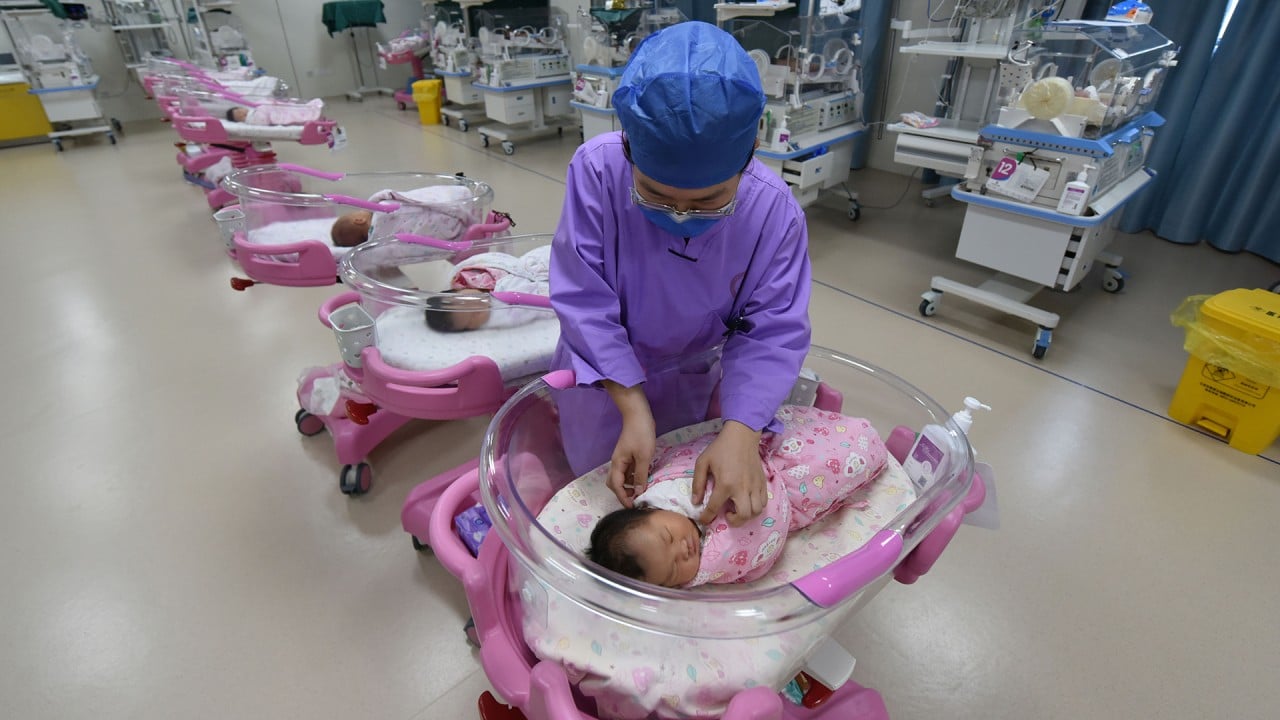
China’s deepening demographic crisis calls for stronger, more coherent course of action from Beijing
- Current measures like the three-child policy per couple are not enough to increase the country’s flagging fertility rate
- China’s shrinking population is one of the biggest ‘grey rhinos’ – highly probable yet neglected threats – endangering the country’s future
The central government, however, has yet to respond with a coherent and effective strategy to meet this challenge.
But in general, those initiatives are piecemeal measures that have been implemented without any central guideline from Beijing. By comparison, the one-child-policy era held local officials directly responsible for failure to keep population growth in check. It may be time for Beijing to punish local officials who fail to arrest population decline.
Current incentives are also too small to make a difference. Hangzhou’s 20,000-yuan subsidy is among the highest in China, but it is a drop in the bucket when compared to the cost of raising a child. The expense involved for the child’s own room, for example, could easily amount to hundreds of thousands of yuan.
During the time when Beijing kept in check unwanted births, an “out-of-plan” child was often punished by a fine equivalent to a household’s two-year income, infamously known as the “social child-raising fee”. Adapting that idea to the present, the financial incentive for a second or third child should be increased to an amount equivalent to a household’s two-year income.
There are many obvious policy options. China’s personal income tax, for example, is collected on an individual basis, instead of per household, with a next-to-nothing tax deduction for kids.
‘Daringly innovate’ to lower cost of kids, senior Chinese health official urges
Under China’s current tax regime, a child is only entitled to 1,000 yuan of deduction from a couple’s taxable income. This tax credit is so tiny that many couples do not see it as something worth the trouble to claim. What China should do is implement a household-based income tax system as quickly as possible and raise the under-18 tax credit to a level on par with Hong Kong, which is HK$100,000 (US$12,739) per year per child.
China’s shrinking population is one of the biggest “grey rhinos” – highly probable yet neglected threats – endangering the country’s future. Beijing may have neglected this issue for far too long, but now it deserves the central government’s utmost attention and resources.
A decade ago, China’s family planning authority had hailed “reduced births by 400 million” as a great achievement. Just four years ago, China’s then-statistics chief publicly brushed aside concerns about population decline, saying there was no need to “overread” the situation. Today, the problem is too big to ignore and its chain reaction has started.


